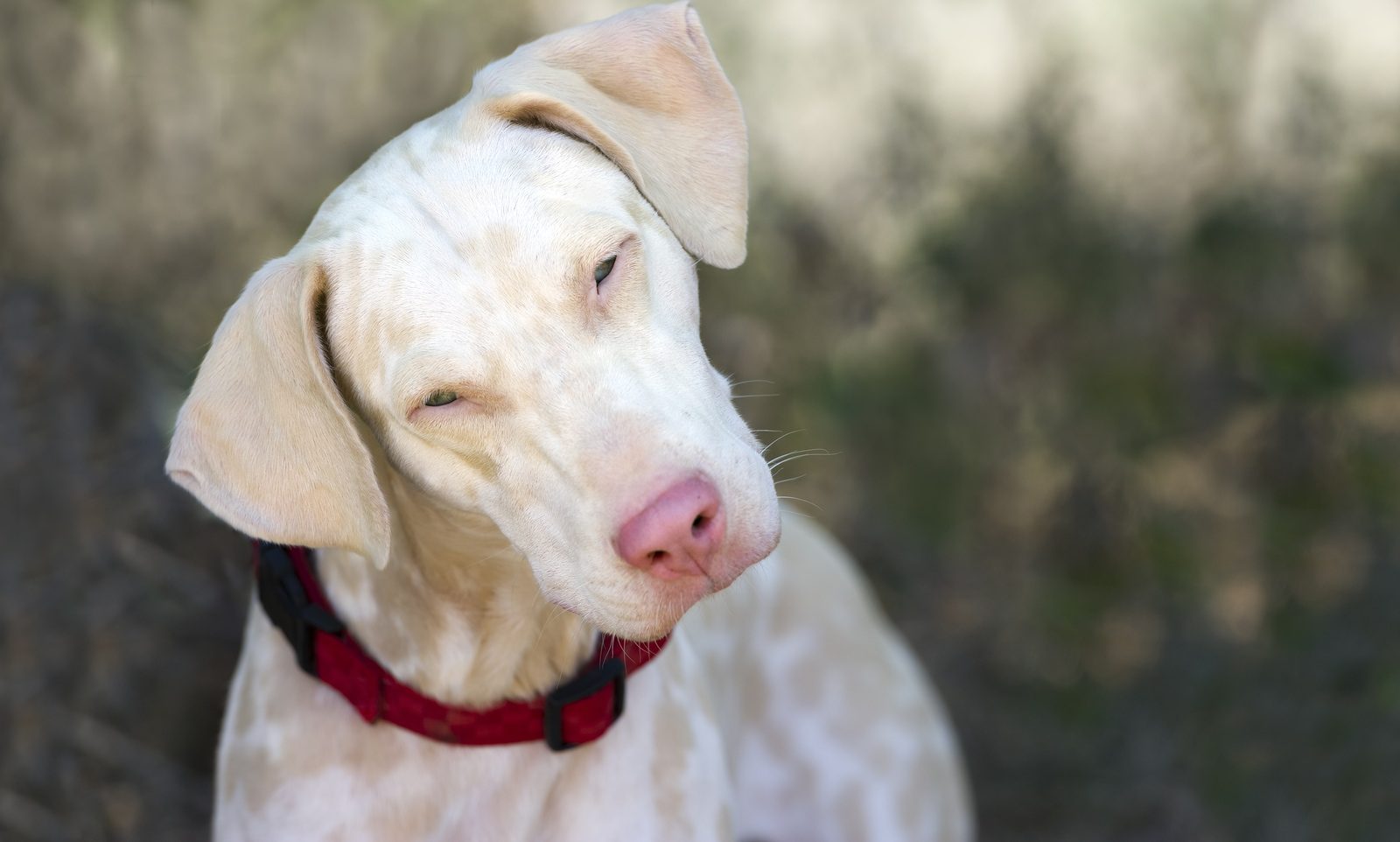
All about albino dogs
If you’re thinking about getting a dog and you’re interested in albino dogs with their beautiful light coats and hypnotic pink eyes, you’re not alone in your desire – many pet lovers adopt such pets into their families.
However, before you get an albino dog, you should carefully study the features of this difficult condition.
Contents
What is albinism?
Albinism in dogs – or any other animal species – is not a breed trait, but a rare genetic mutation called tyrosinase-positive (complete albinos) and tyrosinase-positive (partial albinos) albinism.
Albinism causes a complete lack of pigmentation, including in the skin, coat, and eyes, as well as in the blood vessels, giving them a pinkish tint. Therefore, one of the characteristic differences between a real albino dog and a dog with white fur is pink eyes. An animal with white fur has a genetic profile of white pigmentation or may be partially albino, while a true albino dog is completely devoid of pigmentation.
The National Wildlife Federation explains: “Not all animals that are paler than usual are albinos. In some, pigment is absent everywhere except in the eyes, a phenomenon biologists call leucism. Therefore, a snow-white dog with blue eyes, such as a Siberian Husky, is not considered an albino.
In order for this condition to manifest itself in offspring, both parents must be carriers of the albinism gene. It is possible that two black dogs that carry a recessive gene can produce an albino puppy when mated.
However, albinism tends to be more common in certain breeds of dogs, such as Collies and Great Danes, and sometimes partial albinism appears in the form of spots. For example, you may see white spots on the chest or head of an animal, which usually indicates the presence of a recessive gene, but such a dog is not considered a true albino.

Health problems
Since albino dogs lack melanin, which, in addition to providing pigment, also absorbs solar radiation, they are photosensitive (that is, extremely sensitive to ultraviolet light) and therefore must be protected from direct sunlight. “If the dog has to be outside during peak hours of sunshine,” advises PetMD, “owners can use accessories such as UV-protective bodysuits, jackets, and hats.” If you get an albino pet, you will also need to buy sunglasses for dogs and take the utmost care when walking to protect his eyesight.
Another problem associated with the health of albino dogs is skin damage. As with people with pale skin, special care must be taken to prevent excessive sun exposure, which can lead to sunburn or skin cancer, including melanoma. In addition to wearing dog goggles, prepare your dog for a walk in the fresh air by applying sunscreen properly. (But check with your veterinarian first to find out which product to buy and how to apply it.) There are sunscreens made specifically for dogs, and children’s sunscreen might be a good option. Be aware that certain cosmetic ingredients are toxic to dogs: avoid any sunscreen that contains PABA (para-aminobenzoic acid).
In addition, the medical community is concerned that albinism can cause deafness in dogs and other animals. However, according to Dr. George M. Strain, a Louisiana State University School of Veterinary Medicine professor who specializes in deafness in dogs and cats, there is no link between the two: “Albinism, in which melanocytes [the cells responsible for melanin production] are present, but one of the enzymes responsible for the production of melanin (tyrosinase) is absent or reduced, not associated with deafness. Dr. Stein notes that this applies to albino cats as well, emphasizing that deafness is not a side effect of albinism.
A rare and mysterious genetic condition like albinism shouldn’t stop you from getting the puppy of your dreams. With the right care and understanding of your furry friend’s health needs, your life together will be fulfilling and happy.





